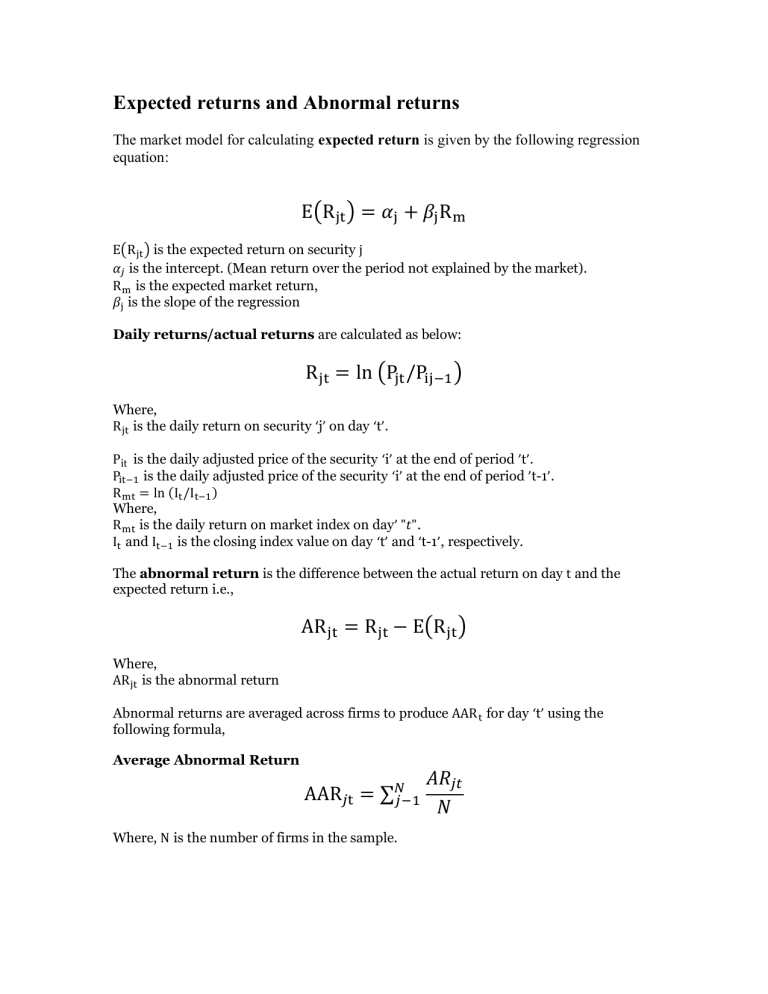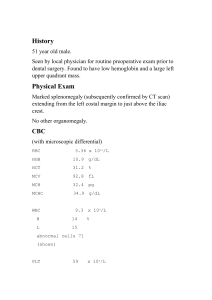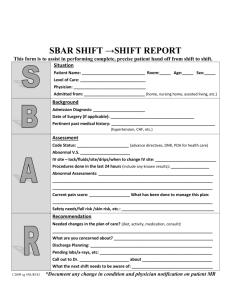
Expected returns and Abnormal returns The market model for calculating expected return is given by the following regression equation: E(R jt ) = 𝛼j + 𝛽j R m E(R jt ) is the expected return on security j 𝛼𝑗 is the intercept. (Mean return over the period not explained by the market). R m is the expected market return, 𝛽j is the slope of the regression Daily returns/actual returns are calculated as below: R jt = ln(Pjt /Pij−1 ) Where, R jt is the daily return on security ‘j’ on day ‘t’. Pit is the daily adjusted price of the security ‘i’ at the end of period ’t’. Pit−1 is the daily adjusted price of the security ‘i’ at the end of period ’t-1’. R mt = ln(It /It−1 ) Where, R mt is the daily return on market index on day’ "𝑡". It and It−1 is the closing index value on day ‘t’ and ‘t-1’, respectively. The abnormal return is the difference between the actual return on day t and the expected return i.e., AR jt = R jt − E(R jt ) Where, AR jt is the abnormal return Abnormal returns are averaged across firms to produce AAR t for day ‘t’ using the following formula, Average Abnormal Return AAR𝑗t = ∑𝑁 𝑗−1 Where, N is the number of firms in the sample. 𝐴𝑅𝑗𝑡 𝑁 Parametric Significance test Parametric t-statistic is used to examine the statistical significance of AARs. It is tested at 5 percent level of significance and appropriate degree of freedom. The statistic is given by t = AARt/𝜎AARt (Standard error of AAR) Where AAR =average abnormal return, 𝜎AARt = standard error of average abnormal return. The standard error is calculated by using following formula. SE = 𝜎/√n Where, S. E = standard error, 𝜎 = standard deviation, n = number of observation




